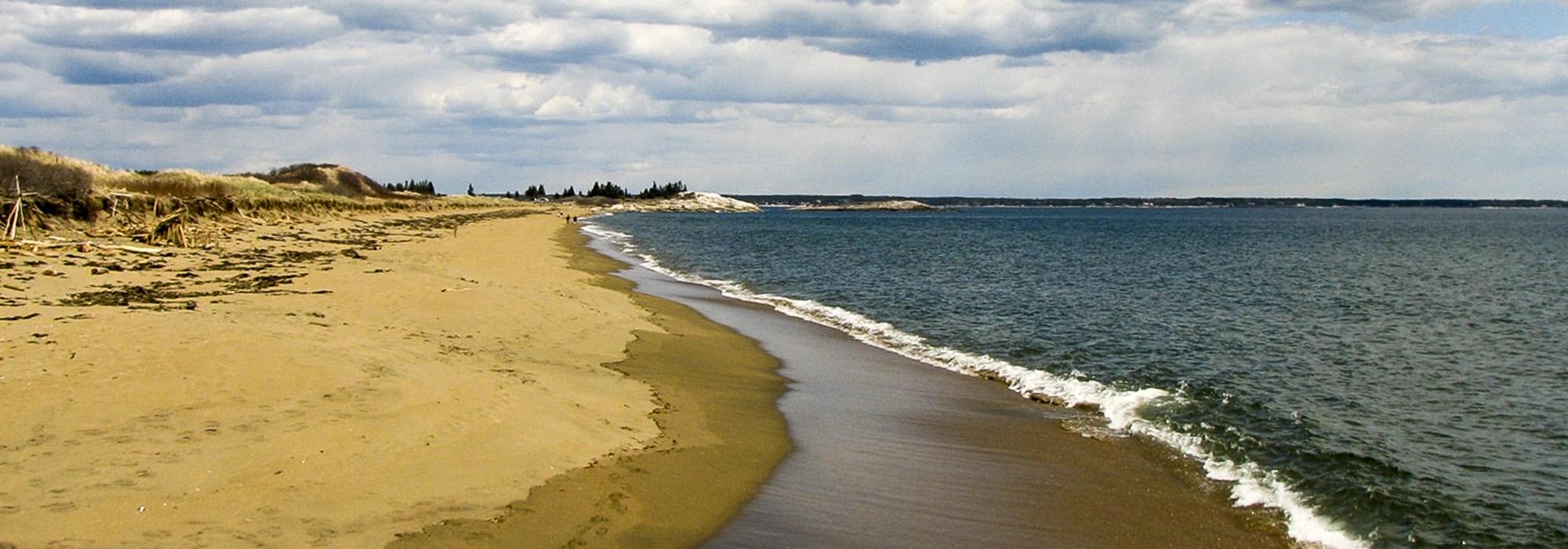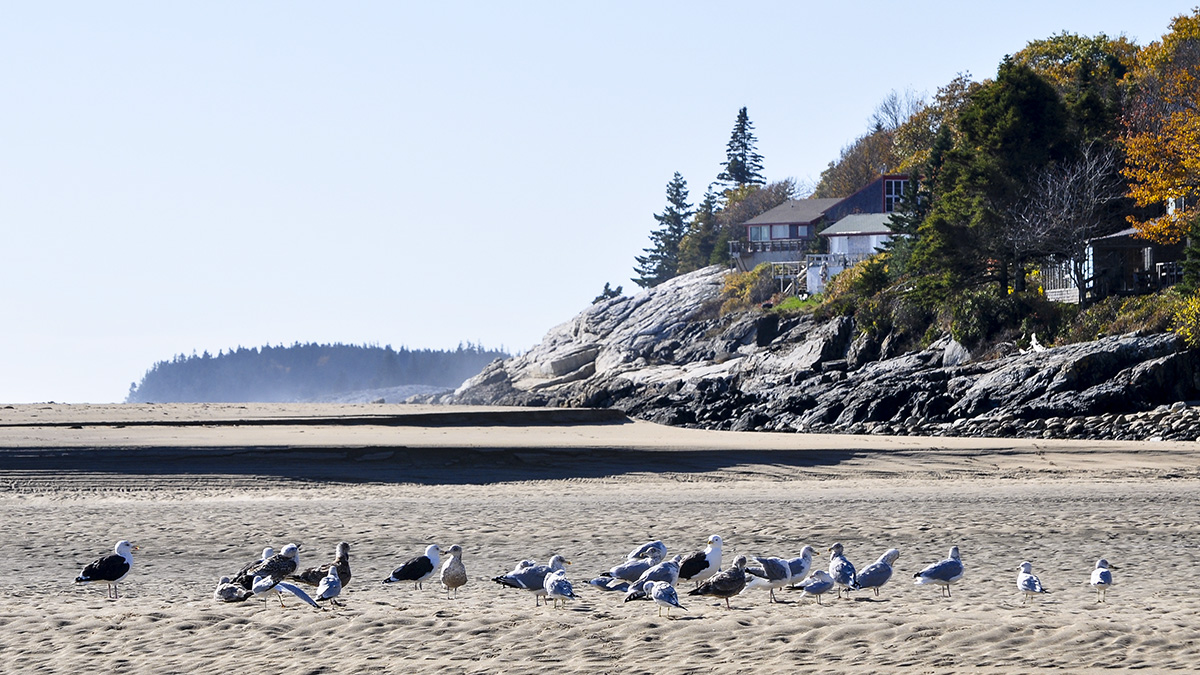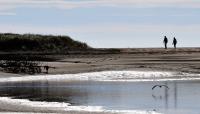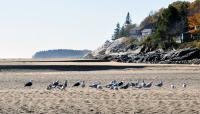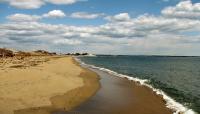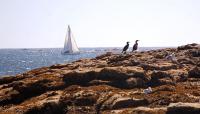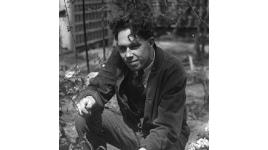The Maine State Parks Commission submitted a report to the National Park Service in 1940 identifying various park needs, including acquiring coastal bathing beaches. In 1946 Maine native and businessman Walter E. Reid donated oceanfront land near his Georgetown home to the state of Maine to be preserved perpetually. Georgetown is an island connected by bridge to the mainland. Reid’s gift included sand beaches and dunes (both unusually large for Maine), rock ledges and headlands, woodlands, salt marshes, a tidal estuary, and a lagoon. Prior to Reid’s gift, the U.S. military created an exceptionally large dune as a backstop for aviator target practice in World War II. Planes from Brunswick Naval Air Station, about fourteen miles away by air, flew over the ocean, beach, dunes, and marsh and fired practice ordnance at an offshore barge as they approached land (storm erosion exposed ordnance in 1997, which required a cleanup effort by the Army Corp of Engineers). Working for the state’s Division of Planning and Development, local landscape architect Myron Lamb designed trails, picnic areas, and parking lots for the park’s 1949 opening. In addition to recreational use, today the beaches are essential nesting areas for endangered shorebirds, as well as resting and feeding areas for other birds. Reid State Park now contains 1,776 acres. The views from its headlands include open ocean, historic lighthouses, other headlands, and islands, including Southport, where noted naturalist Rachel Carson wrote Silent Spring.
